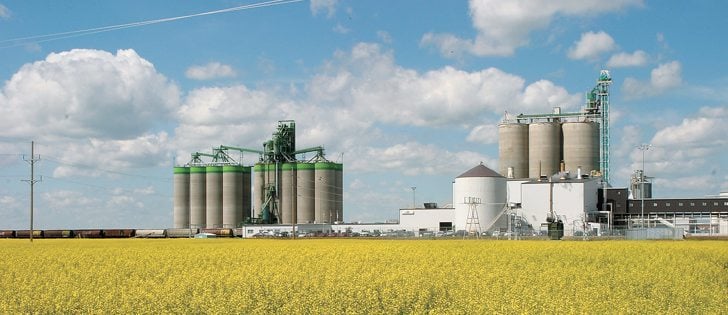Dean Heintz watched 75 millimetres of rain pour down in less than an hour from his Luseland, Sask., office window July 13.
Ten kilometres away at Salvador, Donna Fowler sat on her couch enjoying a lightning show brightening the summer sky.
“We didn’t know the storm was bypassing us until (my husband) Jim got a call from town, ‘I’ve never seen anything like this,’ so we looked out the window again and it wasn’t there,” said Fowler.
Read Also

Canadian Food Inspection Agency red tape changes a first step: agriculture
Farm groups say they’re happy to see action on Canada’s federal regulatory red tape, but there’s still a lot of streamlining left to be done
The heavy rains came too late for many area farmers.
“Right around Luseland for a two-mile radius, crops are as good as they are anywhere, but then it goes absolute brutal after that,” said Heintz, who manages Rack Petroleum in Luseland.
“Lots of crops weren’t even sprayed. There’s just nothing there to spray. The weeds weren’t even growing. It was bad and it’s still bad.”
Bill McMurtry, a meteorologist with Environment Canada in Calgary, said a good portion of southern and central Saskatchewan has received 60 to 85 percent of normal precipitation.
“So it’s drier than normal for a good portion of the province,” he said.
Central and east-central Alberta continue to be very dry, with some locations at less than 40 percent of normal precipitation.
There was some relief with the July 13 downpour.
“It was a big soaker for a good portion of Saskatchewan and southern Alberta,” said McMurtry.
Between Brooks and Medicine Hat, Alta., up to 76 mm fell.
In Saskatchewan, 45 mm fell at Leader and Kindersley, with Elbow receiving 77 mm and tornado sightings at Leader and Lake Diefenbaker.
The following day, southeastern Manitoba received close to 50 mm while southern and south-central areas received 20 mm.
McMurtry said warmer weather is expected over the coming days.
“Looks like we’re looking at more settled conditions. Generally, a more warmer, stable trend by week’s end where we see temperatures in the upper twenties,” he said.
“It’s not the optimum condition. Generally we like to see a big upper ridge of high pressure this time of year where it brings in lots of heat and lots of sunshine.
“What we’re looking at is more of a weaker system, but even that should bring in a relatively stable system,” he said.
About turn
Heintz said this growing season is the opposite of 2008.
“Last year at his time, we had probably the best crops that we’ve had in this country in years. Like, it was fantastic,” he said.
At this time last year, farmers were optimistically buying fertilizer for $820 per tonne. This spring, the price dropped to $595.
“So they got hurt twice and now no crop,” he said.
Heintz estimated the average producer spent $100 per acre this spring on canola seed, spray and fertilizer.
“Now you’re burning the stuff off,” he said.
Heintz said many producers in his area have met the July 15 insurance deadline for burning off their failed crop and converting it to summerfallow.
“You do what you can and you hope and pray for the weather.”
Fowler will be counting on crop insurance this year but remains pleased about the recent change in the weather.
“We ended up with about a half inch, so that was good, we’ll take that,” she said.















